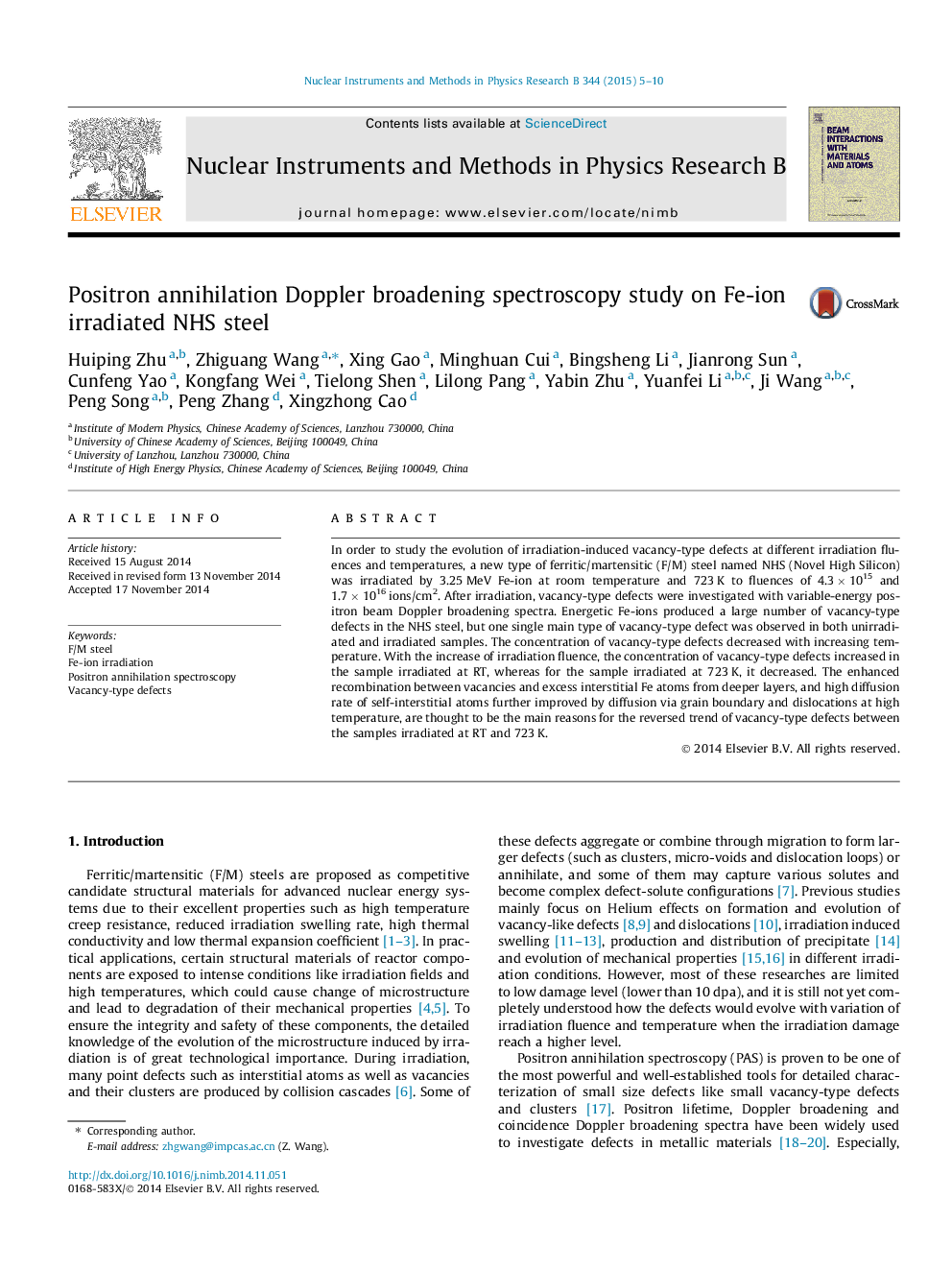| Article ID | Journal | Published Year | Pages | File Type |
|---|---|---|---|---|
| 8041024 | Nuclear Instruments and Methods in Physics Research Section B: Beam Interactions with Materials and Atoms | 2015 | 6 Pages |
Abstract
In order to study the evolution of irradiation-induced vacancy-type defects at different irradiation fluences and temperatures, a new type of ferritic/martensitic (F/M) steel named NHS (Novel High Silicon) was irradiated by 3.25Â MeV Fe-ion at room temperature and 723Â K to fluences of 4.3Â ÃÂ 1015 and 1.7Â ÃÂ 1016Â ions/cm2. After irradiation, vacancy-type defects were investigated with variable-energy positron beam Doppler broadening spectra. Energetic Fe-ions produced a large number of vacancy-type defects in the NHS steel, but one single main type of vacancy-type defect was observed in both unirradiated and irradiated samples. The concentration of vacancy-type defects decreased with increasing temperature. With the increase of irradiation fluence, the concentration of vacancy-type defects increased in the sample irradiated at RT, whereas for the sample irradiated at 723Â K, it decreased. The enhanced recombination between vacancies and excess interstitial Fe atoms from deeper layers, and high diffusion rate of self-interstitial atoms further improved by diffusion via grain boundary and dislocations at high temperature, are thought to be the main reasons for the reversed trend of vacancy-type defects between the samples irradiated at RT and 723Â K.
Related Topics
Physical Sciences and Engineering
Materials Science
Surfaces, Coatings and Films
Authors
Huiping Zhu, Zhiguang Wang, Xing Gao, Minghuan Cui, Bingsheng Li, Jianrong Sun, Cunfeng Yao, Kongfang Wei, Tielong Shen, Lilong Pang, Yabin Zhu, Yuanfei Li, Ji Wang, Peng Song, Peng Zhang, Xingzhong Cao,
